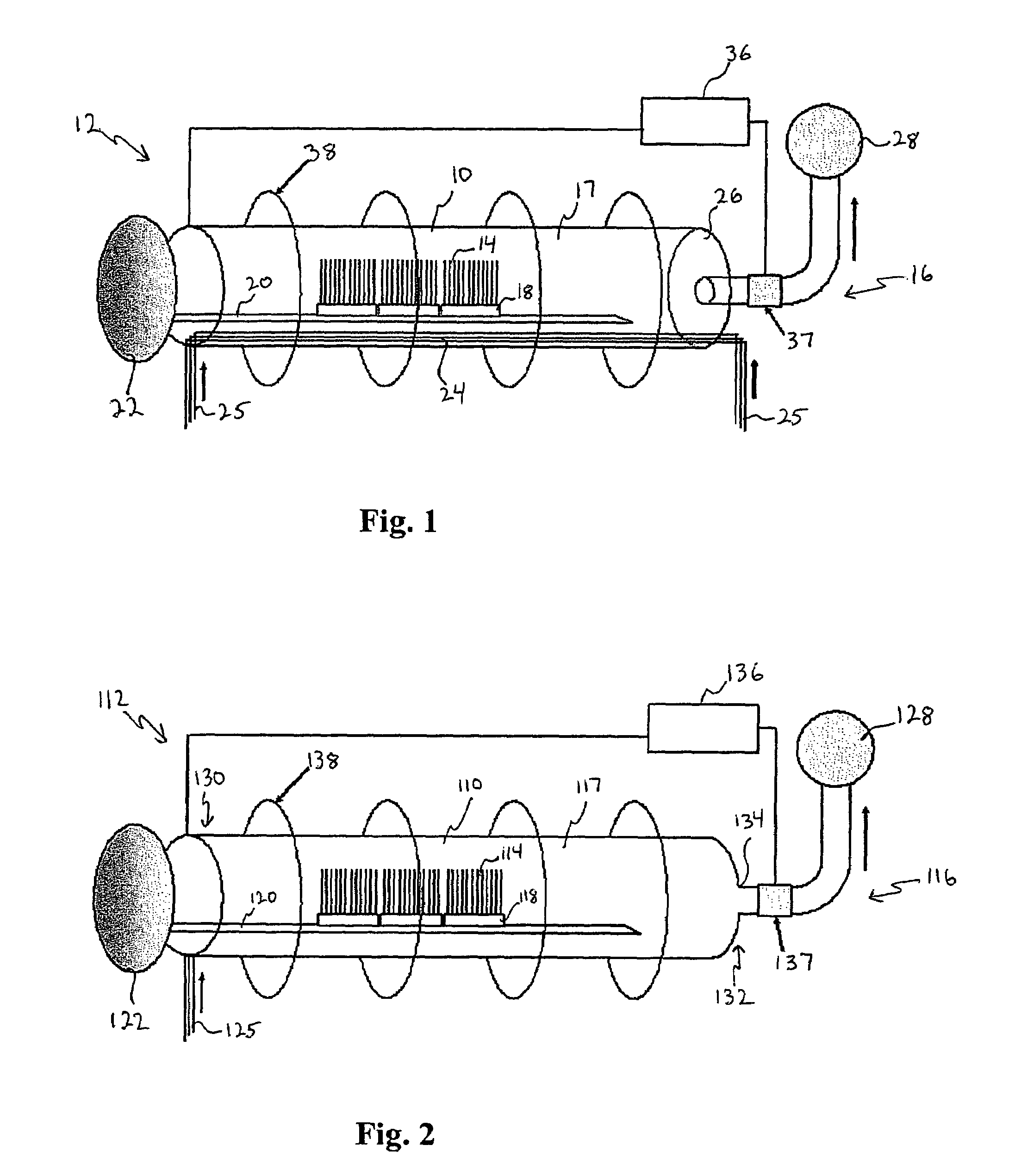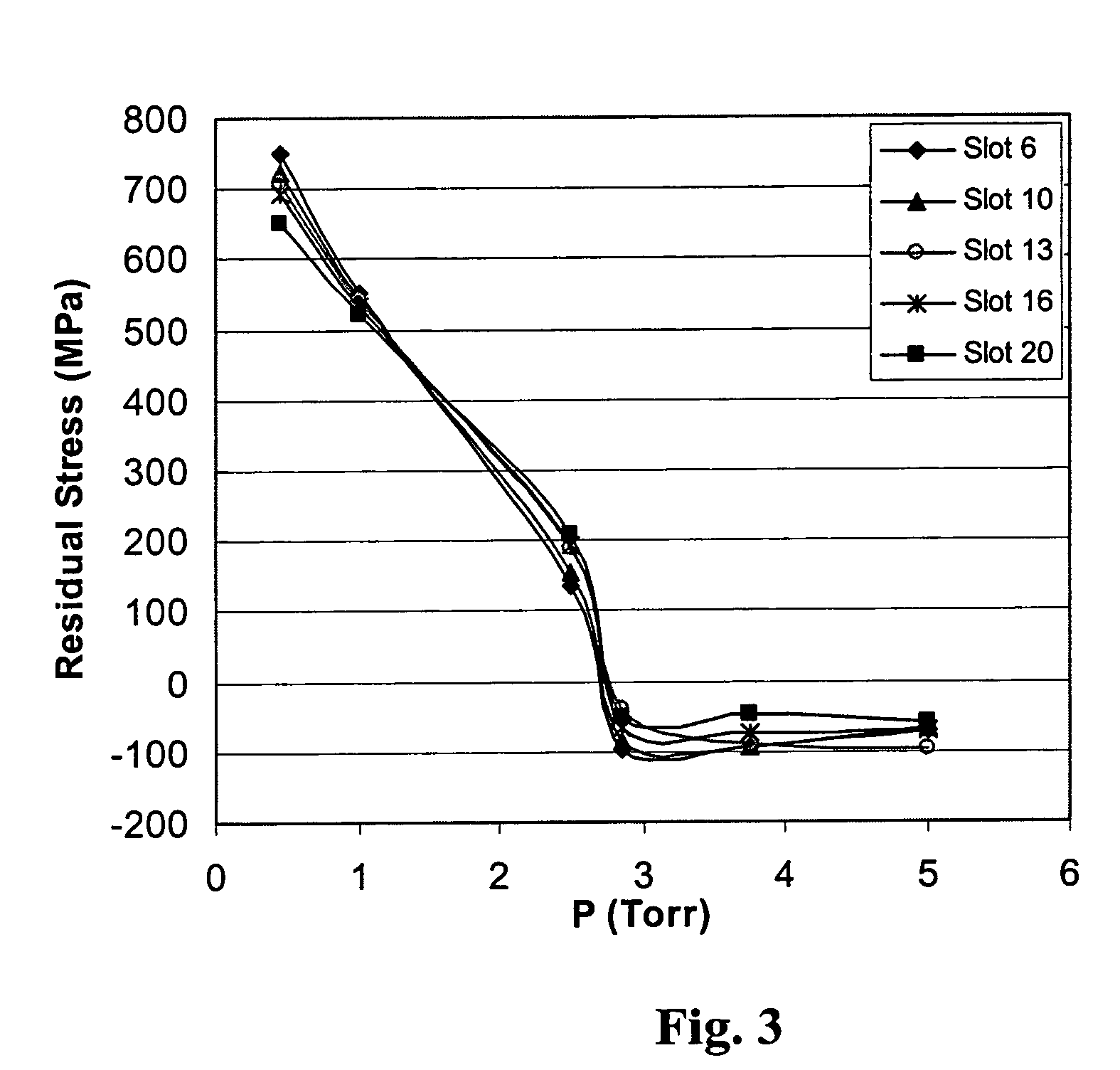Silicon carbide and other films and method of deposition
a technology applied in the field of silicon carbide and other films, can solve the problems of inability to deposit uniform films of silicon carbide on large-area substrates, development of silicon carbide, and inability to achieve the effect of uniform film formation
- Summary
- Abstract
- Description
- Claims
- Application Information
AI Technical Summary
Benefits of technology
Problems solved by technology
Method used
Image
Examples
example 1
[0038]FIG. 1 illustrates the low pressure chemical vapor deposition apparatus 12 used for these tests. Depositions were performed for two hours at pressure settings from about 0.42 torr to about 5 torr. In several cases, longer times were used to deposit thicker films. The flow rates of DCS and acetylene (5% in hydrogen) were held constant at about 54 standard cubic centimeters per minute (sccm) and 180 sccm, respectively. The temperature was held fixed at about 900° C. The furnace was configured with injector tubes to introduce the acetylene and DCS gases into the reaction chamber.
[0039]Following each deposition, the thickness of the films was measured optically using a Nanospec 4000 AFT spectrophotometer. The film residual stresses were determined by measuring the curvature of the silicon wafers before and after film deposition, using a laser-based curvature measuring system (Frontier Semiconductor measurement, FSM 120). Silicon carbide films were deposited on both sides of the wa...
example 2
[0044]The same procedure described above was used, except that the low pressure chemical vapor deposition apparatus 112 illustrated in FIG. 2 was used (no injectors, single front flange). For this series of tests, the deposition pressure was maintained essentially constant at about 2.0 torr, and the flow rate of the silicon precursor, in this case DCS, was varied between about 18 sccm and about 54 sccm. The flow rate of acetylene (5% in hydrogen) was fixed at about 180 sccm, and the temperature of the reaction chamber was maintained at about 900° C.
[0045]As above, the films were characterized for residual stress, residual stress gradient, and electrical resistivity. FIG. 6 illustrates the measured residual stress versus the flow rate of the DCS. The observed residual stress decreased as a function of DCS flow rate until a flow rate of 36 sccm. The residual stress was substantially the same at a flow rate of 54 sccm as it was at a flow rate of 36 sccm. The residual stress as a functi...
PUM
| Property | Measurement | Unit |
|---|---|---|
| electrical resistivity | aaaaa | aaaaa |
| pressure | aaaaa | aaaaa |
| pressure | aaaaa | aaaaa |
Abstract
Description
Claims
Application Information
 Login to View More
Login to View More - R&D
- Intellectual Property
- Life Sciences
- Materials
- Tech Scout
- Unparalleled Data Quality
- Higher Quality Content
- 60% Fewer Hallucinations
Browse by: Latest US Patents, China's latest patents, Technical Efficacy Thesaurus, Application Domain, Technology Topic, Popular Technical Reports.
© 2025 PatSnap. All rights reserved.Legal|Privacy policy|Modern Slavery Act Transparency Statement|Sitemap|About US| Contact US: help@patsnap.com



